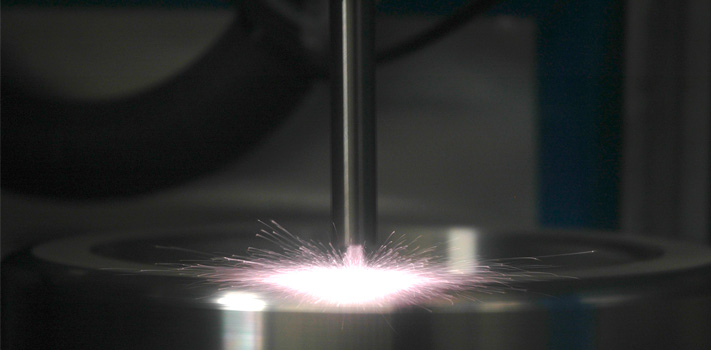Kinetic Metallization
The Future of Solid-State Coatings
Kinetic Metallization™ (KM) is an additive manufacturing process that can be used to deposit a wide range of metals, plastics, and metal matrix composites onto a substrate. The substrate material may be ceramic, glass, plastic, or most commonly metal. KM is often used to apply coatings, but it can also be used to form freestanding shapes. KM applied materials exhibit excellent properties because the KM feedstock is never heated above its thermal softening point and is deposited using an inert gas, usually helium or nitrogen. Thus deposition induced oxide formation is eliminated and thermal distortions are minimized.
Kinetic Metallization™ relies on kinetic energy to deposit the coating instead of thermal energy, the particles must be accelerated to high speeds before they can be deposited. The high velocity powder particles plastically deform upon impact, which causes a very large increase in the surface area of the particles (about 400%), creating a new, oxide-free surface. These new active surfaces form proper metallurgical bonds upon contact with other active surfaces. In order to facilitate the deformation of the particles they are heated to increase their ductility, however, they are never melted. Since this process takes place below the melting point of both the feedstock and the substrate, the metallurgical properties of both are preserved.
KM takes advantage of several patents (US and International) held by Inovati to set itself apart. One patent is for the specially designed, two phase friction compensated sonic deposition nozzle that accelerates metal particles entrained in an inert carrier gas to speeds up to 1000 m/s. This means that KM uses less than one-tenth of the gas used by super-sonic processes to achieve the same particle velocities. Another patent is for Inovati’s brush-sieve powder feeder design. This technology allows KM equipment to repeatably and evenly feed a variety of feedstocks with particle sizes from 500nm to 50µm at at rate of 1 to 100 g/min. These technologies are why KM is the only means of depositing heavy metals and metal ceramic matrices, like WC-Co, niobium, and MCrAlYs, using impact consolidation.


